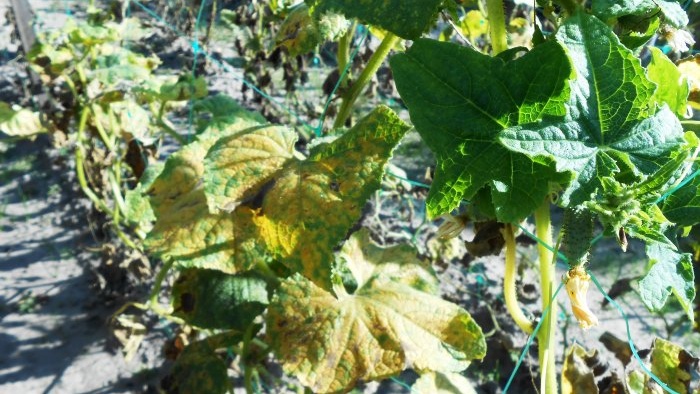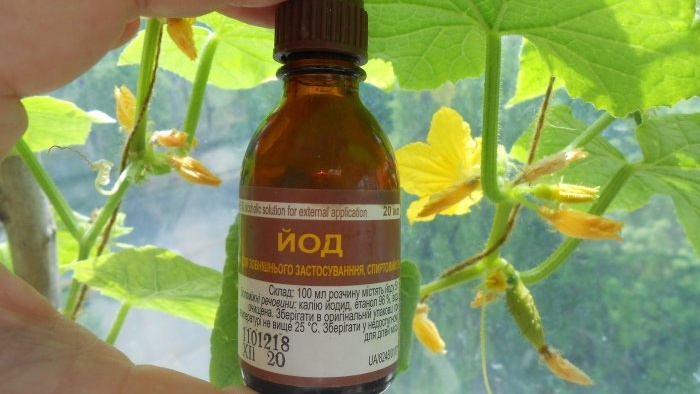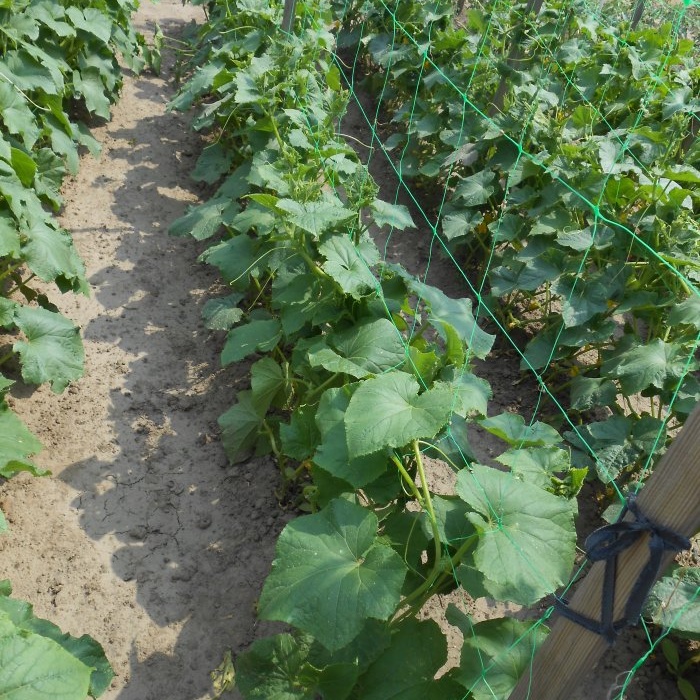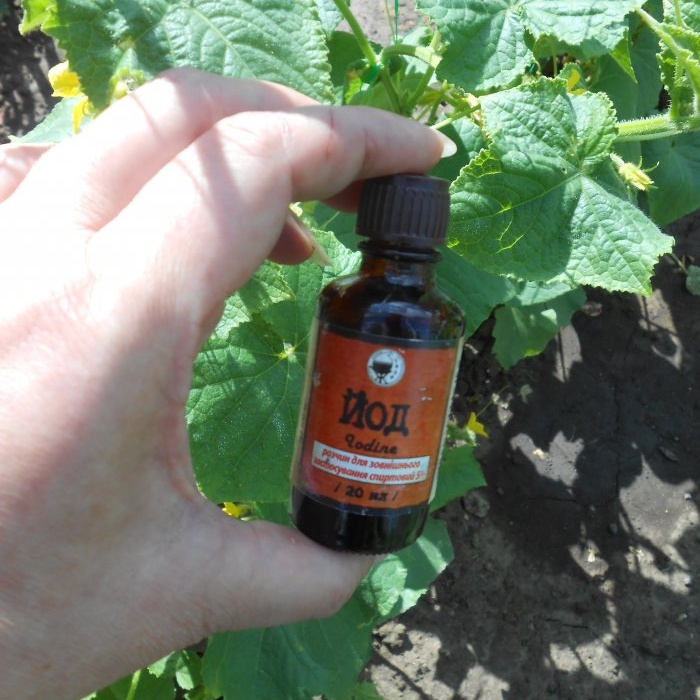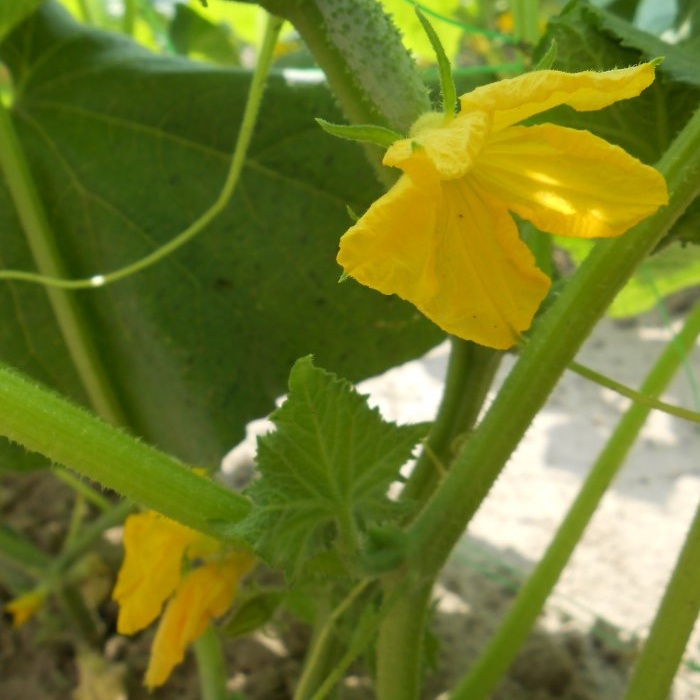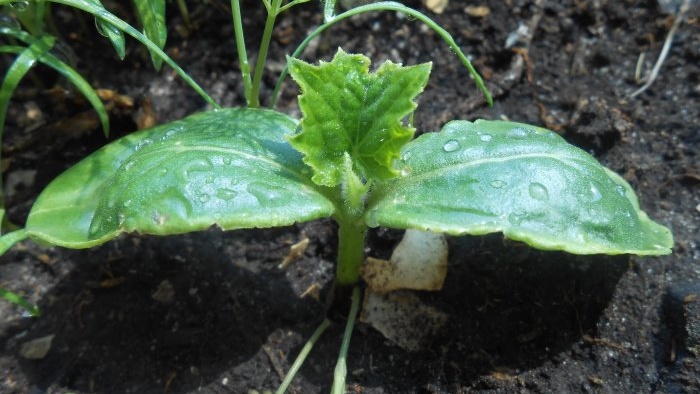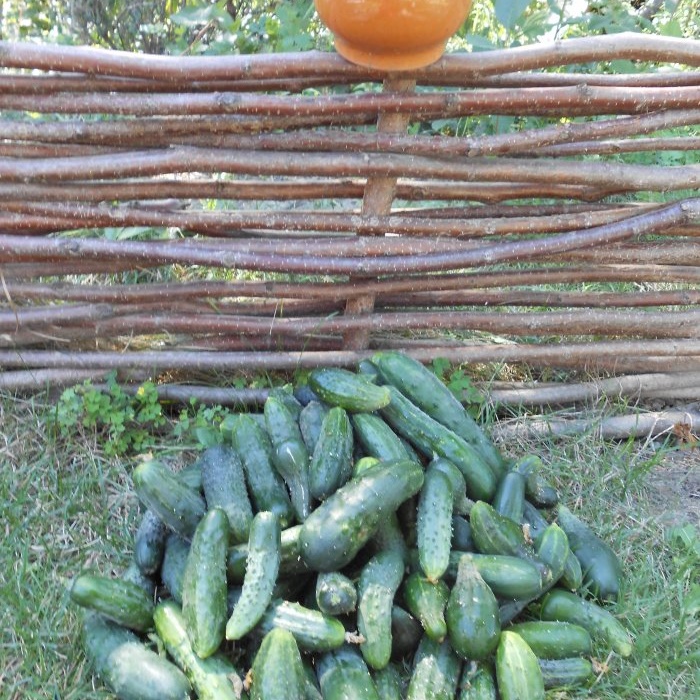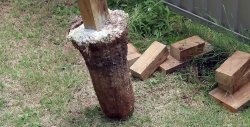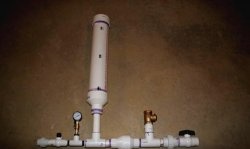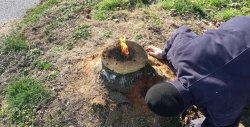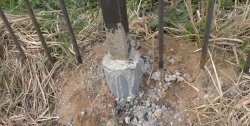A solution of milk and iodine against diseases of cucumbers
Summer residents who grow cucumbers in greenhouse conditions and in open beds know that the main losses in the yield of their favorite pumpkin crop are observed when fungal and bacterial diseases spread in the plantings. First, spots of various shades and shapes appear on the leaf blades of a lush green color, then the leaves on the affected plants turn yellow and then dry out. Ultimately, any disease of cucumbers leads to premature aging of the bushes and their death.
Today, it is not difficult to purchase an effective fungicide with complex action against most pathologies of pumpkin vegetables. However, gardeners who fundamentally do not use pesticides on their plots prefer to treat plants with biological solutions that are 100% safe for the environment. Their components completely decompose in nature, without accumulating either in the leaves or in the fruits of seedlings, even at the stage of mass ripening of green plants.
One of the most popular remedies against powdery and downy mildew on cucumbers, as well as some other crop diseases caused by bacteria and fungi, is a solution of milk and a regular pharmacy tincture of iodine (5%). If you include spraying a cucumber plantation with this solution in your weekly plant care schedule, you can significantly extend the fruiting period of gherkins.
In addition to diseases, a solution containing soap and milk, as well as the effective antiseptic iodine, protects cucumbers from some dangerous pests, such as aphids and spider mites. After treatment and complete drying, the leaves, covered with an impenetrable thin film, become less vulnerable to insects.
The use of the product is justified throughout the entire growing season of cucumbers, starting from the stage of formation of the third true leaf. This recommendation applies to cases where plants are cultivated by sowing directly into the ground. When growing a crop using the seedling method, the first treatment is carried out only after the sprout has completely rooted in the garden bed and the active process of forming new leaves has begun. The optimal frequency of spraying is once every 7-10 days.
In closed structures, the procedure is performed at any time convenient for the summer resident. On open plantations, cucumbers are irrigated with a solution of milk and iodine over the foliage only in the absence of bright sun, for example, in cloudy weather or after sunset. Plants living outdoors are processed in dry and windless weather. If there is precipitation after the event, it is repeated, since the rain washes away most of the bioactive components.
Such a simple penny remedy can significantly ease your work of caring for cucumber plantings.
We wish you abundant vegetable harvests!
The struggle for an environmentally friendly harvest of gherkins
Today, it is not difficult to purchase an effective fungicide with complex action against most pathologies of pumpkin vegetables. However, gardeners who fundamentally do not use pesticides on their plots prefer to treat plants with biological solutions that are 100% safe for the environment. Their components completely decompose in nature, without accumulating either in the leaves or in the fruits of seedlings, even at the stage of mass ripening of green plants.
One of the most popular remedies against powdery and downy mildew on cucumbers, as well as some other crop diseases caused by bacteria and fungi, is a solution of milk and a regular pharmacy tincture of iodine (5%). If you include spraying a cucumber plantation with this solution in your weekly plant care schedule, you can significantly extend the fruiting period of gherkins.
In addition to diseases, a solution containing soap and milk, as well as the effective antiseptic iodine, protects cucumbers from some dangerous pests, such as aphids and spider mites. After treatment and complete drying, the leaves, covered with an impenetrable thin film, become less vulnerable to insects.
Prevention of cucumber diseases using a biological fungicide based on milk and iodine
The use of the product is justified throughout the entire growing season of cucumbers, starting from the stage of formation of the third true leaf. This recommendation applies to cases where plants are cultivated by sowing directly into the ground. When growing a crop using the seedling method, the first treatment is carried out only after the sprout has completely rooted in the garden bed and the active process of forming new leaves has begun. The optimal frequency of spraying is once every 7-10 days.
The recipe for a biological remedy for cucumber diseases is simple.
It is enough to pour 9 liters of settled water heated in the sun into a bucket, 1 liter of milk (it is better to take a low-fat drink), dissolve 25 g of any adhesive (grated laundry soap, green soap, dishwashing detergent, washing powder, etc.) and add to liquid 30 drops of alcohol tincture of iodine.After the solution has stood for 10 minutes, it can be poured into a sprayer and sprayed on the above-ground part of the cucumbers, not forgetting to irrigate the lower part of the leaf blades and stems.In closed structures, the procedure is performed at any time convenient for the summer resident. On open plantations, cucumbers are irrigated with a solution of milk and iodine over the foliage only in the absence of bright sun, for example, in cloudy weather or after sunset. Plants living outdoors are processed in dry and windless weather. If there is precipitation after the event, it is repeated, since the rain washes away most of the bioactive components.
Such a simple penny remedy can significantly ease your work of caring for cucumber plantings.
We wish you abundant vegetable harvests!
Similar master classes

Fertilizing available to everyone for protection and a large harvest of cucumbers

Free fertilizer that will increase yield and sugar content

Iodine solution against late blight of tomatoes

Foliar feeding of tomatoes with boric acid to increase
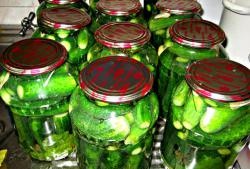
Canning cucumbers

There will be a large potato harvest if the beds are properly prepared.
Particularly interesting
Comments (0)

